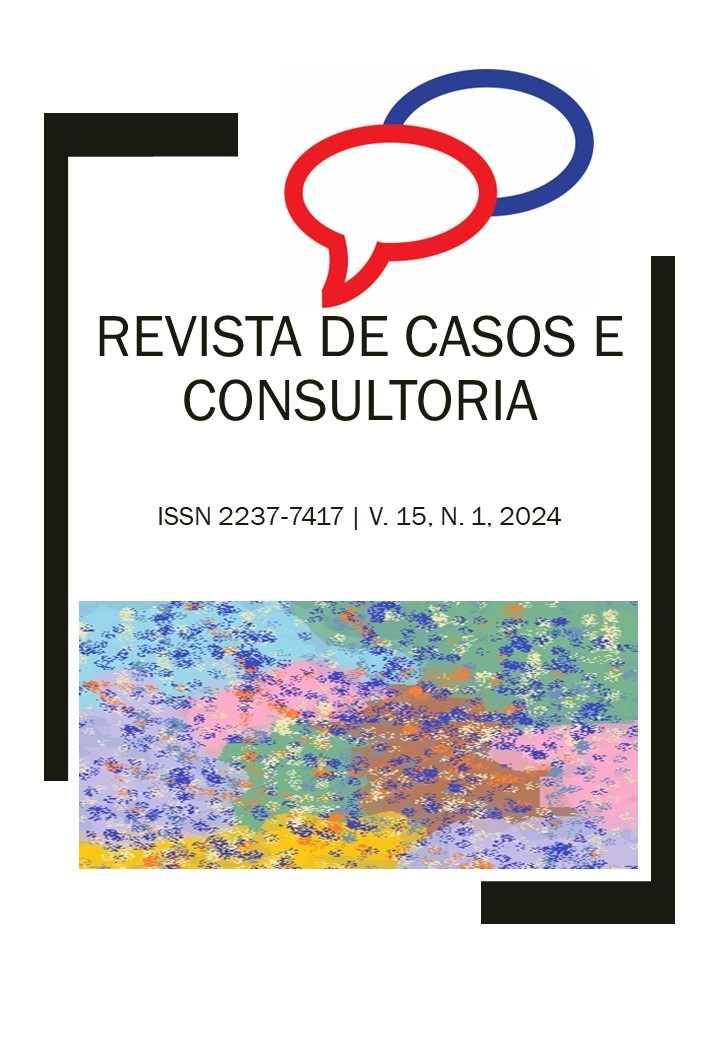Epidemiological study of case notifications due to self-medication in the state of Piauí between 2012 and 2022
Keywords:
Epidemiology, Self-medication, Medicines, Health, PiauíAbstract
The indiscriminate use of medicines, including self-medication, represents a significant challenge to health, society and the economy in many communities. In addition to involving the use of medications without medical advice, resulting in delays in seeking adequate assistance, with serious economic implications. The objective is to provide a comprehensive view of the epidemiological profile of self-medication notifications in the state of Piauí. The study is descriptive and cross-sectional in nature, focusing on cases of self-medication in the state of Piauí between 2012 and 2022. Secondary data from DATASUS was used. Data collection involved systematic searches in databases, with analysis guided by the variables of year of notification, age group and sex. During the period studied, 405 incidents of self-medication were reported in the State of Piauí. Self-medication is common due to prior knowledge about the disease, lack of time to seek medical assistance and financial concerns. Young people and adults are more prone to the practice, influenced by advertising that promotes the consumption of medicines. The predominance of cases in urban areas, such as Picos, Teresina and Parnaíba, reflects the ease of access to medicines without a prescription. Self-medication represents a growing challenge for public health in Piauí, requiring preventive and educational measures, especially aimed at young people and women. Furthermore, the practice of "home-made pharmaceuticals" must be addressed to reduce the dangers related to self-medication. These actions are essential to combat this problem and ensure everyone's access to safe and effective healthcare.
Downloads
References
ARRAIS, P. S. D. et al. Prevalência da automedicação no Brasil e fatores associados. Revista de Saúde Pública, v. 50, n. Suppl 2, p. 10, 2016.
AZAMI-AGHDASH, S. et al. Prevalence and cause of self-medication in Iran: a systematic review and meta-analysis article. Iranian Journal of Public Health, v. 44, n. 12, p. 1580, 2015.
BATISTA, J. A. et al. Automedicação e Saúde Pública: dimensionamento dos fatores de risco e comportamentos de saúde. Fármacos, v. 10, p. 11, 2021.
BERNARDES, H. C. et al. Perfil epidemiológico de automedicação entre acadêmicos de medicina de uma universidade pública brasileira. Brazilian Journal of Health Review, v. 3, n. 4, p. 8631-8643, 2020.
CONSELHO FEDERAL DE FARMÁCIA. Pesquisa sobre o uso de automedicação. Disponível em: https://site.cff.org.br/.
CORREIA, B. C.; TRINDADE, J. K.; ALMEIDA, A. B. Fatores correlacionados à automedicação entre os jovens e adultos: uma revisão integrativa da literatura. Revista de Iniciação Científica e Extensão, v. 2, n. 1, p. 57-61, 2019.
DE ANDRADE, S. M. et al. Caracterização do perfil das intoxicações medicamentosas por automedicação no Brasil, durante o período de 2010 a 2017. Research, Society and Development, v. 9, n. 7, p. e236973952, 2020.
DE SANTANA, J. K. D. S. et al. Investigação epidemiológica dos casos de intoxicação exógena por medicamentos decorrentes da automedicação no estado do Piauí. Research, Society and Development, v. 12, n. 3, p. e13112340601, 2023.
ESTRELA, C. Metodologia científica: ciência, ensino, pesquisa. Artes Médicas, 2018.
GONÇALVES, H. C.; DA COSTA, J. B. Intoxicação exógena: casos no estado de Santa Catarina no período de 2011 a 2015. Arquivos Catarinenses de Medicina, v. 47, n. 3, p. 02-15, 2018.
MAIOR, M. C. L. S.; OLIVEIRA, N. V. B. V. Intoxicação medicamentosa infantil: um estudo das causas e ações preventivas possíveis. Revista Brasileira de Farmácia, v. 93, n. 4, p. 422-30, 2012.
PARI-OLARTE, J. B. et al. Factores asociados con la automedicación no responsable en el Perú. Revista del Cuerpo Médico Hospital Nacional Almanzor Aguinaga Asenjo, v. 14, n. 1, p. 29-34, 2021.
PONS, E. D. S. et al. Predisposing factors to the practice of self-medication in Brazil: Results from the National Survey on Access, Use and Promotion of Rational Use of Medicines (PNAUM). PLoS One, v. 12, n. 12, p. e0189098, 2017.
PRADO, M. A. M. B. D. et al. Use of prescription drugs and self-medication among men. Revista Brasileira de Epidemiologia, v. 19, p. 594-608, 2016.
QIN, S. et al. Self-medication and its typology in Chinese elderly population: A cross-sectional study. Frontiers in Public Health, v. 10, p. 954305, 2022.
SANTOS, S. T. S.; DE ALBUQUERQUE, N. L.; DE MELO GUEDES, J. P. Os riscos da automedicação com medicamentos isentos de prescrição (MIPs) no Brasil. Research, Society and Development, v. 11, n. 7, p. e42211730493, 2022.
SELVARAJ, K.; KUMAR, S. G.; RAMALINGAM, A. Prevalence of self-medication practices and its associated factors in Urban Puducherry, India. Perspectives in Clinical Research, v. 5, n. 1, p. 32, 2014.
TOGNOLI, T. A. et al. Automedicação entre acadêmicos de medicina de Fernandópolis–São Paulo. Journal of Health & Biological Sciences, v. 7, n. 4 (Out-Dez), p. 382-386, 2019.
WIROWSKI, N. et al. Prevalência de automedicação para COVID-19 entre adultos jovens durante a pandemia no Brasil. Research, Society and Development, v. 11, n. 7, p. e29011729955, 2022.
XAVIER, M. S. et al. Automedicação e o risco à saúde: uma revisão de literatura. Brazilian Journal of Health Review, v. 4, n. 1, p. 225-240, 2021.
Downloads
Published
How to Cite
Issue
Section
License
Copyright (c) 2024 Mateus Lima Almeida, Marcos Lima Almeida, Maria Victória Macedo de Andrade, Juliana da Silva Oliveira, Sâmia Moreira de Andrade, Débora Caroline do Nascimento Rodrigues

This work is licensed under a Creative Commons Attribution 4.0 International License.

 Português (Brasil)
Português (Brasil) English
English Español (España)
Español (España)